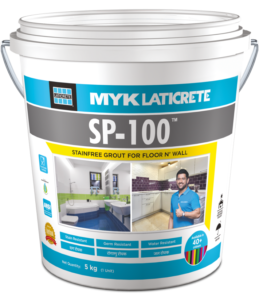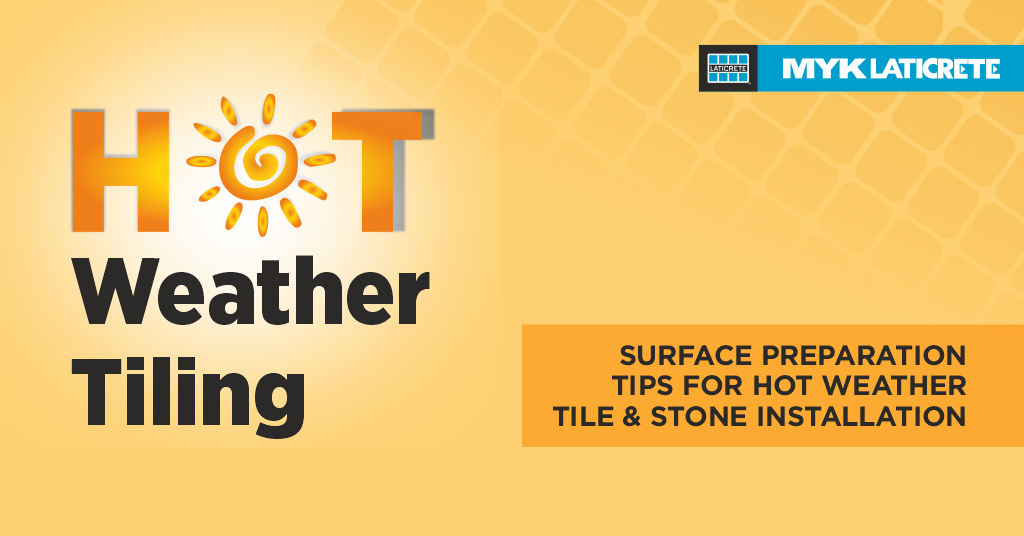The key to a successful tile/stone installation with adhesive mortars is good surface check and proper surface preparation. During the hot season, it is much more critical to keenly observe and do the surface preparation before tile and stone is installed.
Below are the tips:
- Cleanliness of surface: Before any tile or stone is installed on a concrete slab, floor screed or plaster, dry wall board, the surface must be clean and free from dirt, dust, oil, grease, curing compounds, sealers, paint, site debris etc. It is imperative that a thorough visual inspection is mandatory to understand the condition of site. Plumb and levels need to be checked and marked in advance.
- Curing of substrate and condition for tiling: The concrete or cement-based substrates should have completed curing and need to be dry for resin based adhesive mortar applications.
- Strength of substrates: It is important to understand that the surface receiving tile or stone should be strong enough to take the loads like dead loads, loads that arise from traffic, environmental elements etc. Hence it is imperative to ask relevant questions to site engineers, builder or contractors and in case of deficiencies, need to prepare the substrate to fit the installation.
- Pre- Wetting of Cement based substrates: Often it is seen that adhesive mortars are applied on cement plaster without wetting it. This results in a weak bond causing failure of tile/stone. The surface should be brought to SSD (Surface Saturated Dry condition) when cement based adhesive mortars are being used for installation.
- Pot life, Open time and Adjustment time of mortars: The substrate, which is hot and dry, makes the adhesive mortar’s open time and adjustment time reduced. The pot life of the adhesive mortar also gets reduced with rise in temperature. Necessary measures need to be taken to reduce the surface temperature of the substrates so that the adhesive mortars perform with designed working properties.
- Bond Coat / Primer coat for Underlays: It is important to integrate the underlays with the substrates like concrete / screed / Plaster. This would require a primer coat or Bond coat with a suitable material and underlay material must be placed on the surface when the primer coat is still wet and tacky. During hot weather, the primer coats quickly dry and hence fail to integrate the elements. Necessary measures like using cold water for making the primer coats and mixing the cement mortars should be planned.
- Suitability of waterproof membrane, adhesive or grout: It is important to understand that many types of tiles and stones with high variation in their characteristics, formats (Sizes) are available. Also the area of application (Floor/wall/interior/exterior/wet area/drywall board/) and functionality of area (High traffic / Medium Traffic/ Low traffic) needs to be evaluated before deciding the type and quality of water proofing, adhesive or grout is chosen for installation. Hot weather conditions demand highly flexible waterproofing membranes, polymer modified adhesive mortars and grouts for successful installations.
- Exterior installations: Many times, during hot weather, the mortars dry fast and don’t allow proper installation of tile/stone leading to failures. Installations should be done providing shade or best-done early mornings and during late evenings.
To conclude, it can be said “The success of tile and stone installation starts with right inspection, surface preparation and choosing right products for right application system during the hot weather conditions.”






